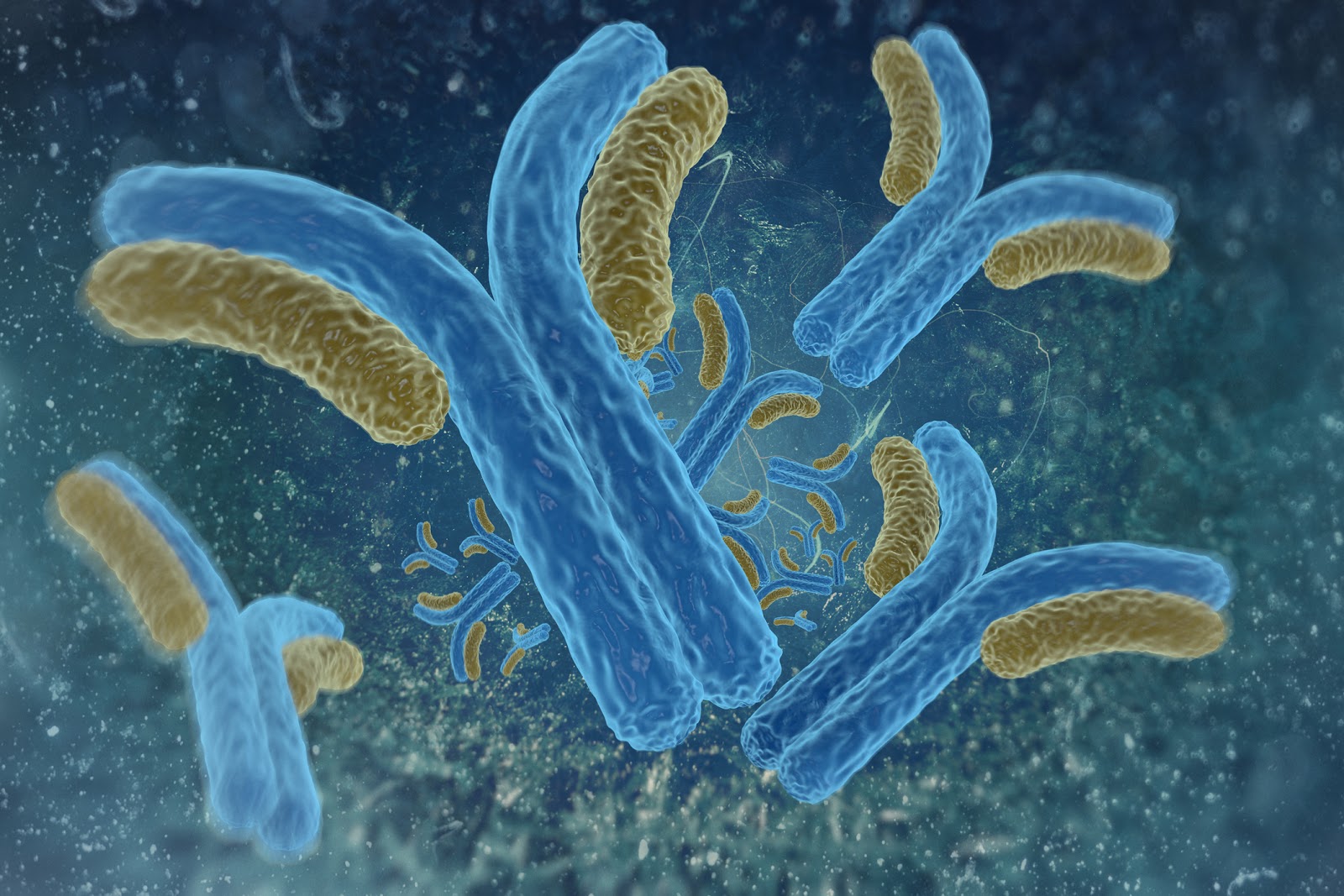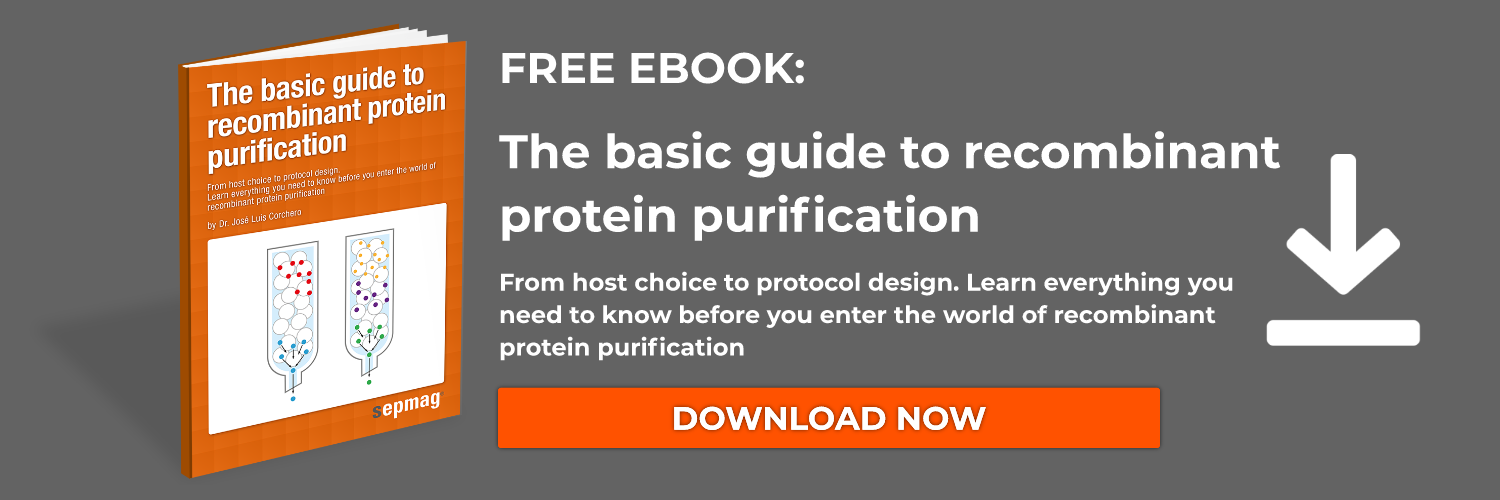Principles of immunoprecipitation with magnetic beads
Immunoprecipitation is one of the commonly used antibody-based techniques which relies on the specific affinity of an antibody to identify its target molecule within a biological sample for further analysis and research.
In a general protocol, antibody is pre-bound to a scaffold (magnetic beads or agarose beads) while it is incubated with lysates containing the target molecule. The mixture is then placed in the presence of a magnetic force. Using a classical magnetic rack the beads will be tightly held against the side of their container. The buffer simply can be removed from the container while the target molecule is still bound to the strongly immobilized beads to be finally eluted. This can also be done with free antibodies, which can be mixed with a cell lysate to bind their target, and then are bound to magnetic beads.
The classical magnetic racks have a magnetic force that decreases with the distance, thus the volume of sample you can use is limited. Using these old devices, the beads placed far away from the magnets are difficult to capture, thus part of the material is lost. Even for perfect magnetic beads and ligands, the use of the incorrect separation device would jeopardize the efficiency of the process.
Modern magnetic separators generate a constant magnetic force, using special magnet arrangements. In this way, all the magnetic beads on the vessel can be efficiently captured and retained, regardless of the diameter. This approach already in use in IVD-reagents manufacturing allows to deal with magnetic beads suspensions from milliliters to tens of liters keeping always the same separation efficiency.
Types of Immunoprecipitation with magnetic beads
The overview describes a protocol where a primary antibody is bound to the magnetic bead, for direct binding to target molecules, but there are several other types of bead conjugations with secondary antibodies or surface chemistries that are made for different protocols and budgets.
Protein A, protein G and protein A/G hybrid conjugated magnetic beads are the most common scaffolds to capture various types of antibody subtypes. Protein A and Protein G both have high but different affinity toward antibodies of different hosts and isotypes. The application of the antibody-binding protein should be determined based on the capture antibody employed. Normally, Protein A beads are better suited for rabbit antibodies, while protein G beads have higher affinity toward mouse antibodies.
Online Charts are available that can guide which of the three would best bind the antibody you are using to bind your molecule of interest. Magnetic beads pre-conjugated to secondary antibodies are also available to bind your anti-mouse or anti-rabbit monoclonal antibody in solution. Beads are also made pre-conjugated to streptavidin to bind molecules with a biotin tag. Lastly, there are several types of surface activations on magnetic beads that can help you troubleshoot your immunoprecipitation experiments.
Magnetic beads versus agarose beads ?
Agarose and magnetic beads are two of the most common scaffolds used in immunoprecipitation. Agarose beads are relatively cheap and large (diameter of 45-165µm), and have high antibody binding capacity due to their porous-like structure. However, the antibodies can get trapped in the pores and become difficult to wash off. Therefore, pre-clearing the cell lysate and extensive washing is required when using agarose beads to reduce background. Agarose beads also need a long incubation (6 hours to overnight) with the antibody-protein complex as the porous-like structure significantly reduces the diffusion rate.
Magnetic beads are much smaller (diameter of 1-4μm) with a smooth surface that has a different capacity to bind antibodies based on their material properties and more efficient antibody presentation for better binding to the target molecule. Although many magnetic beads are required for a given volume of sample, the ratio of yield to surface area ends up being better for magnetic beads. Magnetic beads allow for greater reproducibility due to their homogeneous size, easy to work, no centrifugations, less washing steps with no “hidden surface” to trap antibodies, short incubation (2-4 hours) due to a higher diffusion rate. The final sample is purer with higher throughput capacity, and potential automation of the process which all collectively minimize the potential damage to the captured protein complexes, making magnetic beads a much better choice for immunoprecipitation.
When to use magnetic beads?
Magnetic bead technology is optimal for all types of immunoprecipitation protocols. There are CO-IP protocols, which look for proteins that are co-precipitated. Chromatin-immunoprecipitation, ChIP and ChIP-seq, look for protein interactions with DNA and even sequence the precipitated molecules of interest. Many adaptations have been made to the traditional immunoprecipitation, and they can benefit from the use of magnetic beads and the new developments in constant magnetic force separators





